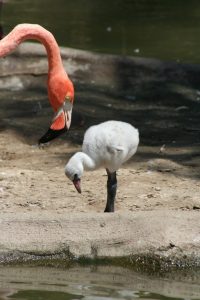- No bugs or frogs — that’d be too easy.
Human babies look pretty different from adults when they’re born. They’re hairless (mostly) and have pretty bizarre proportions.
Look at other creatures in nature, though, and human babies start looking like carbon copies of their parents. And we’re not even talking about insects.
There are plenty of animals where the baby is so different from its parents that it might as well be a different species altogether. Here are some of our favorite animals that go through some kind of transformation as they grow up.
Tapir
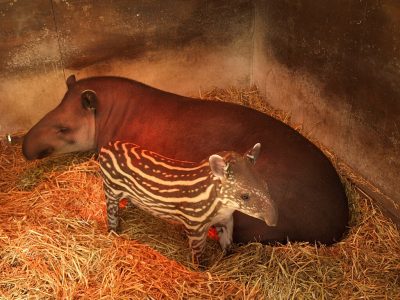
Tapirs are often considered living fossils. Depending on the particular species, these unusual short-trunked creatures have either a dull gray, brown, or black-and-white coloring.
That’s not the case with tapir babies, though. They’re born with distinctive white stripes and dots that make them look much more dashing than their parents.
They almost look kind of like watermelons.
There’s a good reason for the pattern, though. Although it stands out to us, it helps the baby tapir blend into the shadows of their native forests to avoid predators.
The babies’ stripes begin to fade when they’re about six months old.
Emu
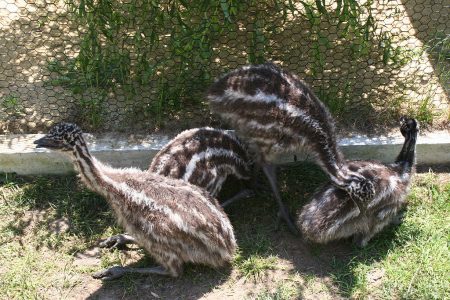
Emus are pretty dull-looking birds with their gray-brown plumage. But just like tapir babies, emu chicks are much more fashionable.
Their feathers have a pattern of white and brown stripes and spots. Really, they might as well be avian tapirs.
And as with tapirs, the pattern serves the same purpose. It helps the chick blend into the environment by breaking its silhouette.
Emu chicks lose their stripes at around three months old. Here’s another emu fact — their eggs don’t even attempt to blend into their surroundings and sport a bright turquoise or avocado green color.
Echidna
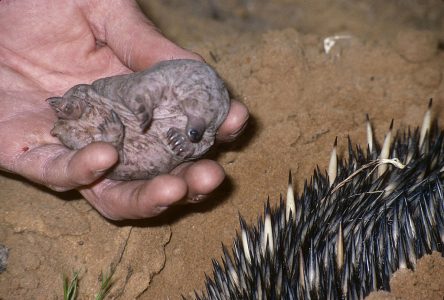
Quick — what’s the most distinctive feature of an echidna? If you thought of the spines, you’d be correct.
Which is why it’s kind of funny that echidna babies are born without spines. They don’t start developing them until around 50 days of birth.
“Of course they don’t have spines!” you say. “Giving birth would be hell on the mother otherwise!”
Well, the joke’s on you — echidnas lay eggs. So why no spines?
That’s because the spines are actually heavily modified hairs. The babies hatch hairless, so they don’t have spines, either.
Swan
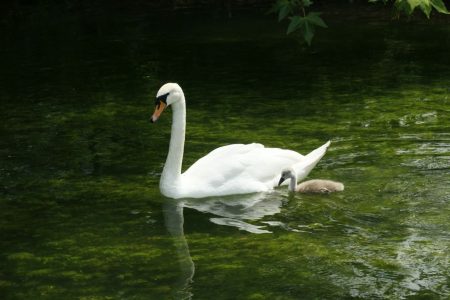
Swans are so majestic with their long, slender necks, orange beaks, and pure white feathers. But if you saw a swan chick (also called a cygnet), you’d probably think it’s just another kind of duck.
Depending on the exact species, baby swans are either dirty gray or brown. Their necks aren’t longer than any other duck’s and their bills are black.
Once again, the purpose of the dull colors is camouflage. It’d be much easier for predators to spot the cygnets if they were shining white from the beginning.
Over the next two years, their necks elongate and they lose their gray down. The last thing to go is the black beak — so if you see a black-beaked swan, you now know it’s a young one!
Silvered Leaf Monkey
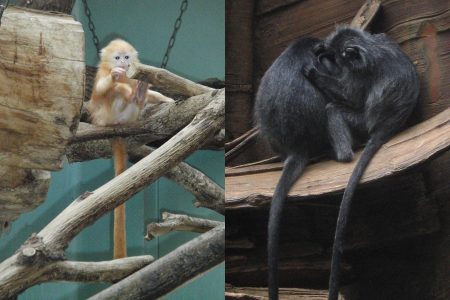
Most animals try to have their babies blend into their surroundings. Not silvered leaf monkeys, though — they do the exact opposite.
Adult silvered leaf monkeys have (you guessed it) dark silvery fur and almost pitch-black skin. Their babies, on the other hand, sport bright golden fur and whitish-pink skin.
We don’t know for certain why they go through such a drastic color change. However, monkey experts believe the answer lies in their communal child care.
Silvered leaf monkey females take care of all babies in the group, not just their own. It may be easier for them to see the young monkeys when they stand out from the adults.
Flamingo
If there’s one thing that defines a flamingo, it’s their pink color. But here’s a shocker for you — flamingos aren’t naturally pink.
It’s true —they dye their feathers.
It doesn’t happen intentionally, though. The coloring is due to the high amounts of the pigment carotenoid (also found in carrots) which they get from their food. Over time, the pigments packs in their feathers, and the birds turn pink.
So what color are baby flamingos? They’re pure white.
Panda
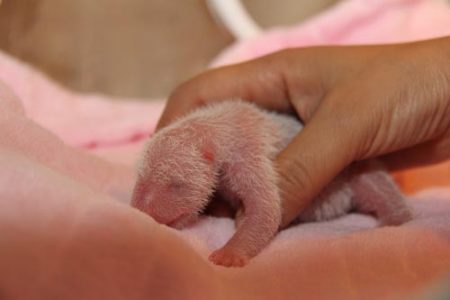
The giant panda is probably one of the most recognizable animals in the world. If you saw a baby panda, though, you’d probably think you’d come across some kind of weird flesh larva.
Newborn baby pandas are about the size of a stick of butter. They’re also bright pink with shaggy, thin white hair.
Along with their larval appearance, baby pandas are blind and completely helpless. The mother must stay with them constantly for three weeks until the baby opens it eyes.
Over the three-week period, the baby has also started developing its first black patches. Huh, what do you know — pandas are black-on-white and not the other way around.
Hits: 0

